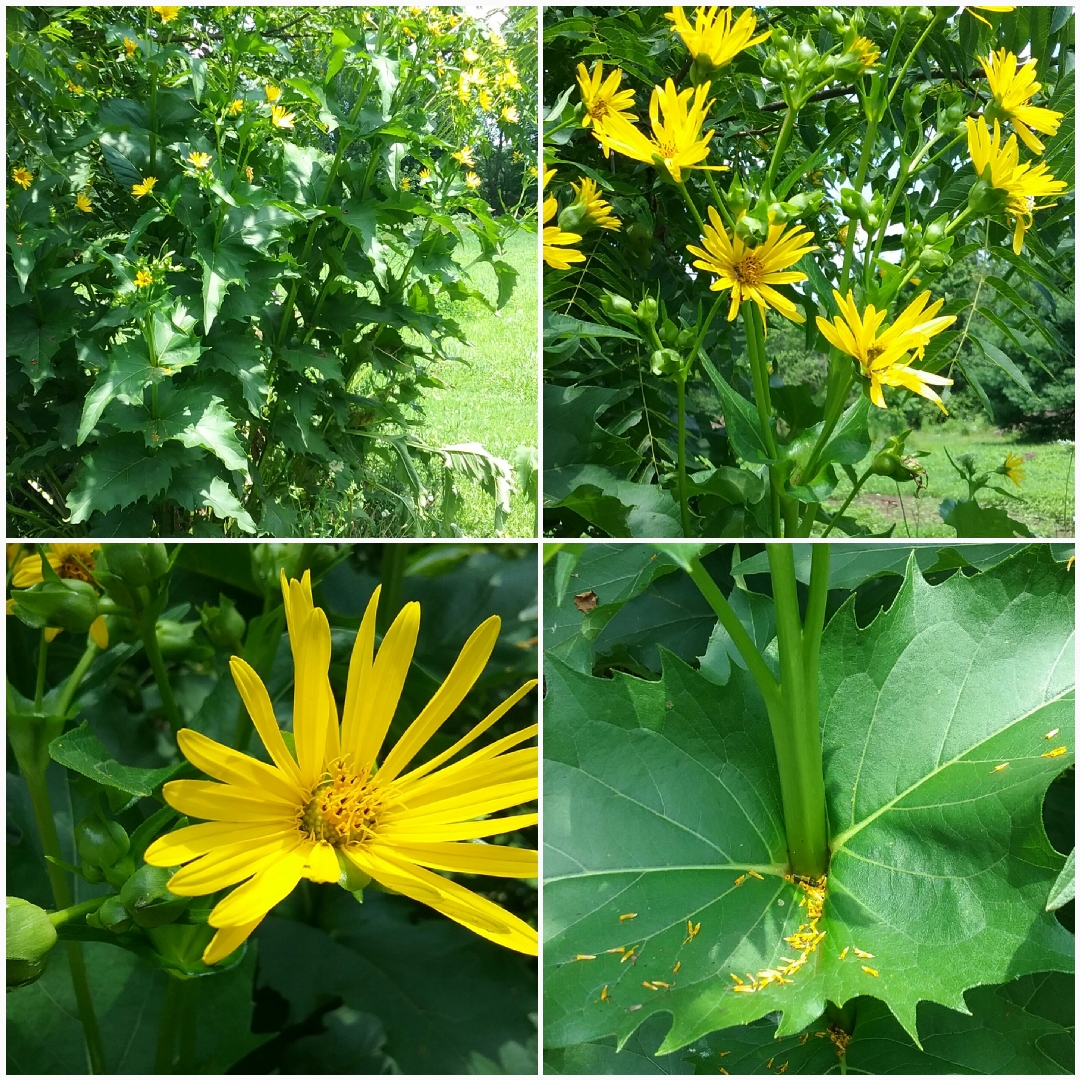
Silphium Perfoliatum
Cup Plant
The Cup Plant is an erect herbaceous perennial with triangular toothed leaves, and daisy-like yellow composite flower heads in summer. The flowers, which appear from mid-summer to autumn are similar in appearance to sunflowers, measuring about 2.5 cm in diameter, with golden yellow ray florets. Cups form where the toothed leaves meet the thick stems; birds are said to drink from the water held in the cups. It is best planted in groups and not individually, so that the flower stalks can fall over some when planted by itself.
Contributed by @moore.794
-
Full sun to partial shade
-
Very little water
-
Full Frost Hardy: 5F (-15°C)
-
Moist and free draining
Common name
Cup Plant
Latin name
Silphium Perfoliatum
type
Herbaceous Perennials
family
Asteraceae
ph
5.0 - 7.0 Acid - Neutral
Plant & bloom calendar
-
Best time to plant
full grown dimensions
 1.00 M
2.20 M
1.00 M
2.20 M
Silphium Perfoliatum
The Cup Plant is an erect herbaceous perennial with triangular toothed leaves, and daisy-like yellow composite flower heads in summer. The flowers, which appear from mid-summer to autumn are similar in appearance to sunflowers, measuring about 2.5 cm in diameter, with golden yellow ray florets. Cups form where the toothed leaves meet the thick stems; birds are said to drink from the water held in the cups. It is best planted in groups and not individually, so that the flower stalks can fall over some when planted by itself.
Planting young plants
From Early Spring TO Early Spring
Plant out at the back of the border in full sun, in a moist but well drained soil. Dig in plenty of well rotted compost before planting. It is best planted in groups and not individually, so that the flower stalks can fall over some when planted by itself. Otherwise, plant close to a trellis where the plants can be tied as they grow taller, to provide support to the flowering stems.











